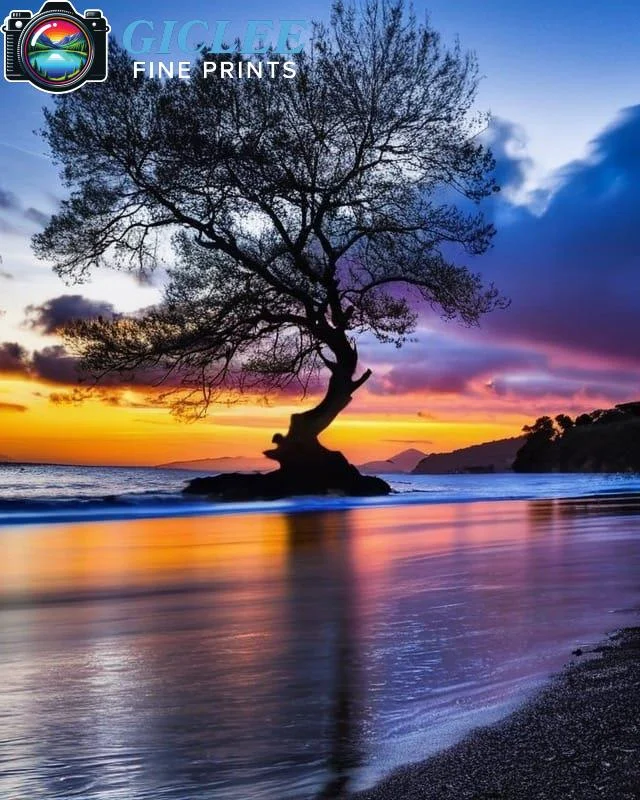
Creating art is all about experimenting and finding new ways to show your vision. One cool technique you can try is using a printed image as an underpainting. This means you start with a print—whether on canvas, fine art paper, metal, or peel-and-stick wall art—and then add layers of paint or other materials on top to make the artwork your own. At Giclee Fine Prints, we encourage artists to explore this method and add more depth and creativity to their prints.
What is an Underpainting?
In traditional painting, an underpainting is the first layer of paint you apply to a canvas to set up the basic colors and shadows. When you use a print as your underpainting, you’re starting with a complete image, and then you add your own paint or other materials on top. This can help you:
- Save time: You don’t need to start from scratch with the composition and form.
- Add more creativity: You can change or enhance the original image however you like.
- Build on a solid base: The printed image gives you a strong foundation to work with.

Choosing the Right Print Medium
Not all prints work the same when you add paint. It’s important to pick the right print material for your technique.
- Canvas: Canvas has texture, so acrylic paints, oils, and pastels blend well with it.
- Fine Art Paper: This is perfect for light paints like watercolors, colored pencils, or inks.
- Metal Prints: Metal is smooth, so you’ll need special primers and paint pens to make the paint stick.
- Peel-and-Stick Wall Art: These prints are best for markers, watercolor pencils, or light paints that won’t damage the adhesive surface.
Preparing Your Print for Painting
Before you start painting on your print, it’s important to make sure everything is ready.
- Clean the surface: Wipe away any dust or dirt to help the paint stick well.
- Test materials: Try a small area first to make sure the paint will work well with the print.
- Apply a protective layer (optional): You can use a clear gesso or matte medium to help the paint adhere better.

Techniques for Transforming Your Print
Now the fun part—adding your personal touch! Here are some ideas for transforming your print:
- Subtle Adjustments: Change the color balance, add highlights, or darken shadows to make the mood of the print fit what you want.
- Textural Enhancements: Use palette knives or thick acrylic paints to create texture that makes the print stand out.
- Partial Obstruction: Paint over certain parts of the image to create abstract areas that leave just a bit of the print showing through.
- Mixed Media Collage: Add other materials like gold leaf, fabric, or stencils to make your piece even more unique.
Pro Tip: Take it slow! Add layers one at a time so you can see how it changes and don’t overwork it.
Preserving Your Finished Artwork
Once you’ve transformed your print, you’ll want to make sure it lasts a long time.
- Use a UV-Protective Varnish: This will protect your artwork from fading and dust.
- Frame it properly: A floater frame works well for canvas, and a protective frame will keep prints on paper or metal safe.
- Store and display safely: Keep your artwork away from direct sunlight, too much humidity, or extreme temperatures to protect it.
Contact Us
Our address is: 3816 Pioneer Trail Ste #3, South Lake Tahoe, CA 96150
Email: Info@gicleefineprints.com
FAQs
Acrylic paints work well on most surfaces. Oils might need a special preparation, and watercolors are great for fine art paper. Always test before you start on the whole print!
It depends on how much paint you use. You can leave some parts of the print showing through to make it look interesting.
Yes! Using a print as an underpainting helps beginners with composition and color decisions, so it’s a great way to experiment and build confidence.


